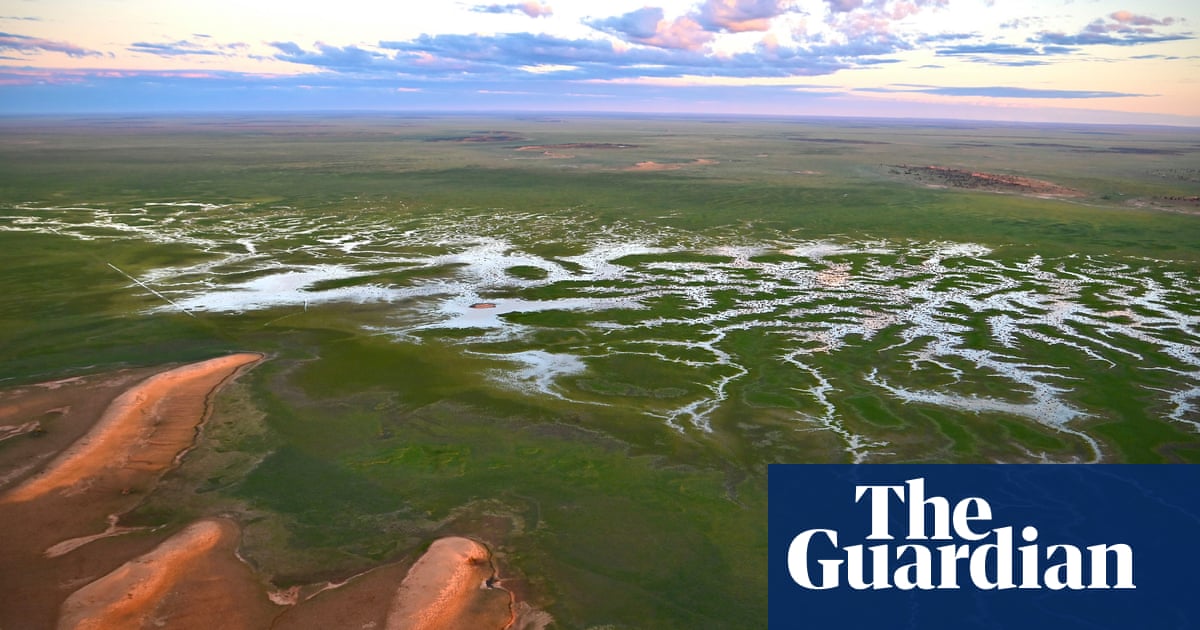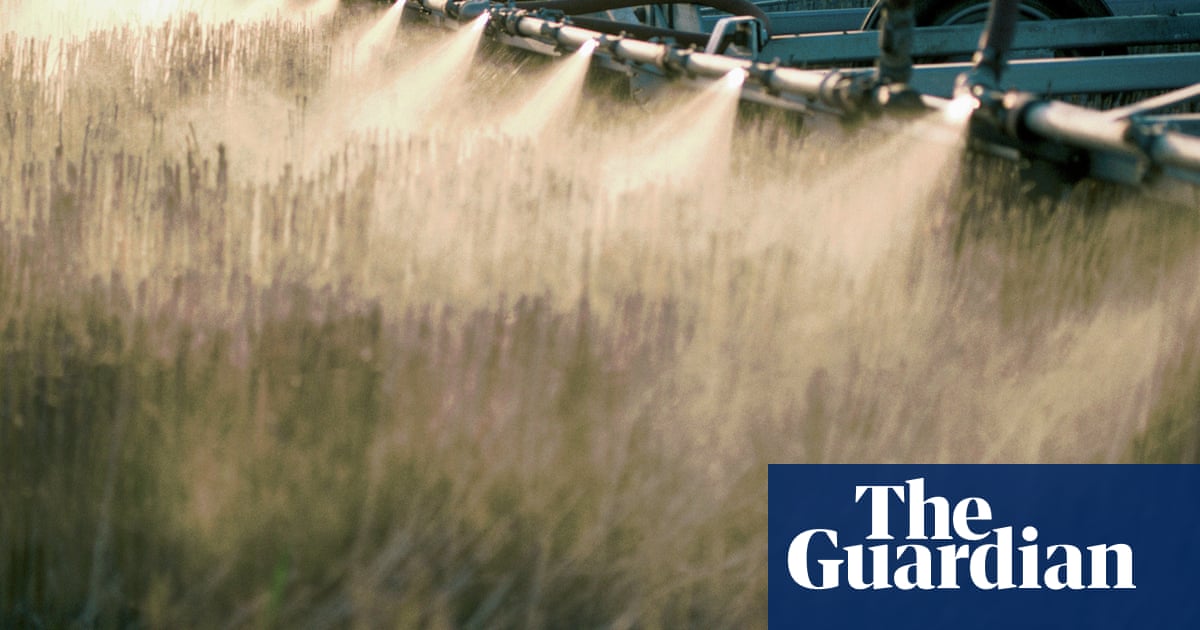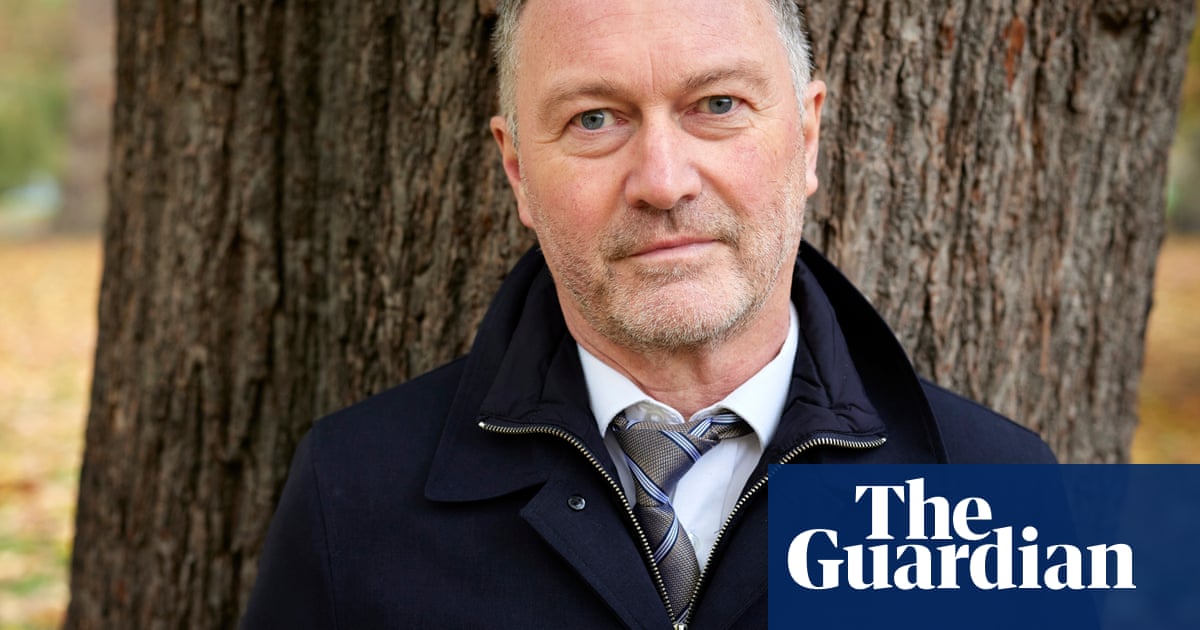Wildflowers and waterbirds populate Australia’s flood-affected outback – and towns are crying out for visitors | Rural Australia

In outback Australia, between Windorah and Coopers Creek in far-western Queensland, there is a brown roadside sign stating “Point of Interest”. A 50-metre drive brings you to a small gravel car park and a white flood marker for the 1974 flood level. It fronts a line of similar markers stretching back to the creek and its attendant channels. Beyond the car park, up the rise, a single white marker stands: March 2025, 8.7m. Windorah’s highest recorded flood.
Between 23 and 26 March, western Queensland received up to four times its average rainfall for the month. The fabled inland sea swelled before the eyes of the people who call the outback home; invading houses, drowning livestock, destroying roads and fences and turning what was, a day earlier, a drought-clutched landscape into a watery vista for as far as those eyes could see.
Three months down the track, roads are open and communities are rebuilding. What is needed now is the tourists to return.
A wander through western Queensland this winter will reveal a landscape exuberant. At the Lake on the outskirts of Quilpie, caravanners pull up alongside an inland waterhole, rimmed by coolabah trees and adorned with water lilies. Three months ago this campsite, operated by Dan and Louise Hoch as a supplement to their grazing business, was under water.
“We lost 3,500 goats, about 200 cows, 40km of fencing and associated infrastructure and our tourist bookings dropped by 70%,” Louise Hoch says. “Tourist numbers are picking up now and we’ve started the rebuild.”
She is trying to be optimistic, but rebuilding will be a long-term challenge.
Tourism drop ‘a big knock’
Flood debris remains on some of the fences surrounding the lake but the mud has now hardened and cracked, forming tessellated patterns, and delicate green life spreads across it.
Helping to fix those fences is the team from BlazeAid, and traveller Erin Passfield has brought her family to help. “I’ve been cooking and my husband Ed has been working on the fencing with our kids aged 11 and eight,” Passfield says. “We’ve found it very rewarding as a family.”
(Above) An exclusion fence between Yaraka and Windorah, destroyed by the floods. Photograph: Mandy McKeesick/The Guardian
From Quilpie the trail heads west, offering a sealed passage to travellers for the 246km to Windorah. It is a testament to the local councils that the majority of road damage is repaired. Hazards come more from murmurations of cockatiels and budgies wheeling in front of drivers. Budgie carnage is unavoidable.
Alongside the road, where water remains in paddocks, brolgas feed and flies are friendly. Closer to Coopers Creek, where the country flaunts ridiculous shades of green, the whistling kites are almost as thick as the flies.
This is channel country and this is Helen Kidd’s back yard. Her station home, Ourdel, surrounds Windorah. Kidd, too, lost stock in the flood but says she lost more in the drought. Though pastures are now green she is still hand-feeding beloved horses “who lost muscle condition in the flood”.
Typical of the stoicism of western Queenslanders, Kidd does not complain. Instead, she promotes this land she loves. From the seat of a mustering chopper she aims her lens at the channels, which form an arterial network across her paddocks, contrasting with the earthy red hues of sand dunes – for here the channel country merges with the desert. It is endlessly beautiful.
In Windorah itself, wildflowers frame the local store and the pub is feeding travellers, though not as many as they would hope. Sally O’Neil is mayor of Barcoo Shire Council. “All the small businesses in these communities rely heavily on tourists for this period of the year, so it’s a big knock to not to have numbers coming through,” she says.
A hundred kilometres north, at Jundah, the council owns most of the houses in a bid to attract and retain staff. Many were flooded but O’Neil says people are tidying up and moving on. “Everyone is back home but we are rotating them in and out as repairs, such as replacement of chipboard cupboards and gyprock walls, get done.”
‘Everyone is in the same boat’
At Yaraka, 170km north-east of Windorah, one family had water 1.5m high through their house – the first time it flooded in the building’s 153-year history.
Mary Killeen and Andrew Pegler own Navarra and Glenlock stations near Yaraka. “We are an official river height station and when we reported nine metres on the Barcoo the [Bureau of Meteorology] thought we had made a terrible mistake,” Killeen says.
Although their stock loses were minimal, they received extensive damage to dams and infrastructure. “Our biggest concern is our damaged exclusion fence. We know there are dingoes back in the paddocks with our sheep and goats,” she says.
The Exclusion Fence Restitution Program was one of several government initiatives to aid those affected by the floods, but funds have yet to flow to those in need.
As most of her pasture responds well to the rain, Killeen is concerned about other members of her community. “Everyone is basically shrugging their shoulders, swearing quietly and getting on with it,” she says. “Everyone is in the same boat but some are worse off than others and I was talking to the RFDS mental health practitioner who reckons the big crunch is going to come down the track, when people aren’t so busy.”
While donations and assistance from the public and organisations such as BlazeAid, Farm Angels and Rural Aid are most welcomed, O’Neil says what their communities need most is visitors.
“We need people out here,” she says. “We need tourists to stay and not just drive through on the way to somewhere else. There is plenty of riverbank camping and the fishing is great at the moment. Spend some money, go to the pub, go to the shop, get some fuel. Come and make western Queensland a destination.”
The landscape will never be as stunning as it is now.
Source link






